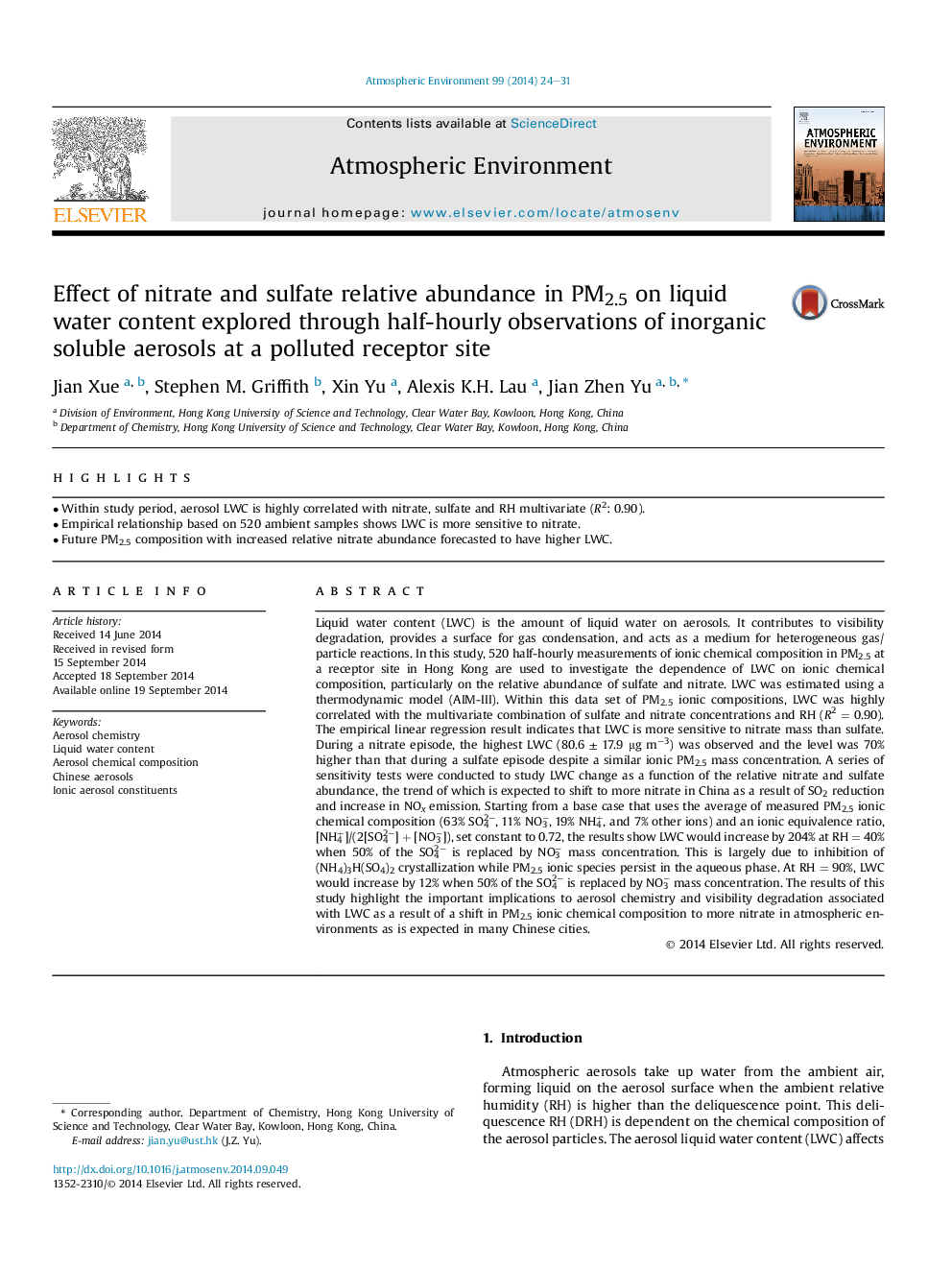| Article ID | Journal | Published Year | Pages | File Type |
|---|---|---|---|---|
| 6339062 | Atmospheric Environment | 2014 | 8 Pages |
Abstract
Liquid water content (LWC) is the amount of liquid water on aerosols. It contributes to visibility degradation, provides a surface for gas condensation, and acts as a medium for heterogeneous gas/particle reactions. In this study, 520 half-hourly measurements of ionic chemical composition in PM2.5 at a receptor site in Hong Kong are used to investigate the dependence of LWC on ionic chemical composition, particularly on the relative abundance of sulfate and nitrate. LWC was estimated using a thermodynamic model (AIM-III). Within this data set of PM2.5 ionic compositions, LWC was highly correlated with the multivariate combination of sulfate and nitrate concentrations and RH (R2 = 0.90). The empirical linear regression result indicates that LWC is more sensitive to nitrate mass than sulfate. During a nitrate episode, the highest LWC (80.6 ± 17.9 μg mâ3) was observed and the level was 70% higher than that during a sulfate episode despite a similar ionic PM2.5 mass concentration. A series of sensitivity tests were conducted to study LWC change as a function of the relative nitrate and sulfate abundance, the trend of which is expected to shift to more nitrate in China as a result of SO2 reduction and increase in NOx emission. Starting from a base case that uses the average of measured PM2.5 ionic chemical composition (63% SO42â, 11% NO3â, 19% NH4+, and 7% other ions) and an ionic equivalence ratio, [NH4+]/(2[SO42â] + [NO3â]), set constant to 0.72, the results show LWC would increase by 204% at RH = 40% when 50% of the SO42â is replaced by NO3â mass concentration. This is largely due to inhibition of (NH4)3H(SO4)2 crystallization while PM2.5 ionic species persist in the aqueous phase. At RH = 90%, LWC would increase by 12% when 50% of the SO42â is replaced by NO3â mass concentration. The results of this study highlight the important implications to aerosol chemistry and visibility degradation associated with LWC as a result of a shift in PM2.5 ionic chemical composition to more nitrate in atmospheric environments as is expected in many Chinese cities.
Related Topics
Physical Sciences and Engineering
Earth and Planetary Sciences
Atmospheric Science
Authors
Jian Xue, Stephen M. Griffith, Xin Yu, Alexis K.H. Lau, Jian Zhen Yu,
